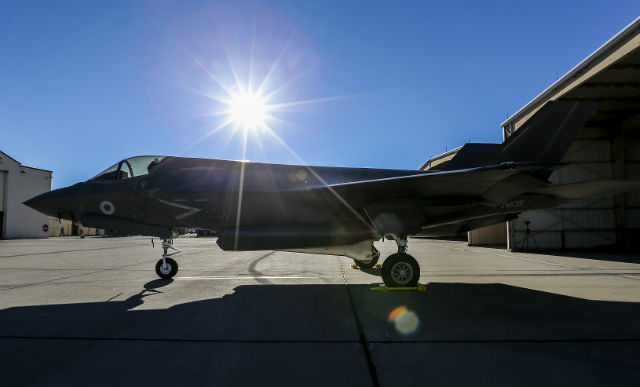Concepts of operation (CONOPS) need to be developed so the UK’s new Lockheed Martin F-35B Joint Strike Fighters can best exploit the large amount of data that it would collect, a Royal Navy (RN) representative has claimed.
There is a requirement for 48 F-35s for the UK, with 12 of these to be deployed on board the RN’s aircraft carriers, but unless the data collection is tailored to the needs of the service, it may be undervalued.
“There are lots of challenges with F-35, but mine is what we’re going to do with the product that comes down off it,” Brig David Evans, assistant chief of staff for information superiority for the RN, told the SMi Airborne ISR conference in London.
“One [issue] is the sheer volume of it. It is capable of picking up an incredible amount of data, so what are we going to do with that data? We need to develop the CONOPS of the aircraft itself and the data coming of it. There are still questions around how we exploit what F-35 has.”
Evans claims that the UK has a reasonable amount of time to develop these CONOPS, but it is concerning that it might not best exploit the terabytes of data collected after each mission.

Crown Copyright
The UK is also looking to fill the maritime patrol aircraft gap that was left when the BAE Systems Nimrod was scrapped in the 2010 Strategic Defence and Security Review.
“It is definitely part of the [2015] strategic defence review whether we’ll get one back,” Evans said. “It would be an appropriate time to do it…because of issues like the vulnerability of the carriers and who else is doing what in the area – the threat. There are reasons for looking at it again.”
The Boeing P-8 operated by the US Navy is one such option, Evans said, as is the Airbus Defence & Space CN295 and the Lockheed Martin Sea Hercules.
“There are a lot of options that we’re looking at. P-8 is often talked about, but it isn’t the only one, and there are arguments for all of them. I wouldn’t like to take a bet as to where we are going to go.
“I’m not sure what it will be, but it will be a major investment if we go down that [MPA] route.”
Other future areas of interest to the RN include the Hybrid Air Vehicles Airlander airship, which could be used as a cargo carrier or persistent surveillance asset, and the Airbus Defence & Space Zephyr high altitude pseudo-satellite, which can also offer persistent watch.
“What we haven’t yet sorted with this [Zephyr] is a meaningful payload,” Evans added. “5kg just doesn’t offer enough, but we are looking at options.”
Evans also added that the British Army’s Thales Watchkeeper unmanned air vehicle could be of interest to the navy, both in its current synthetic aperture radar/ground moving target indicator configuration as well as with a maritime mode added to the radar.
“It is one to watch, but it needs to be integrated more with the rest of the UK ministry of defence,” Evans said. “It has a lot to offer.”
Source: FlightGlobal.com






















